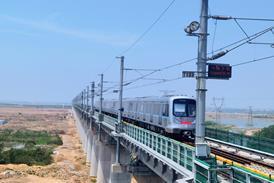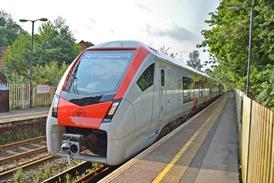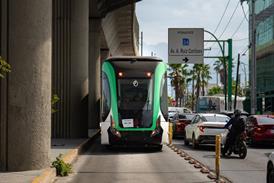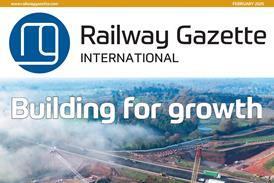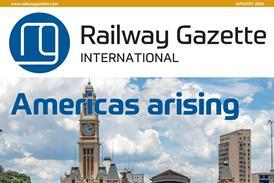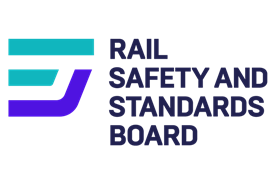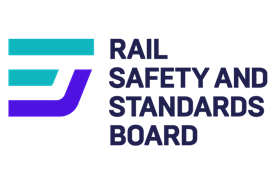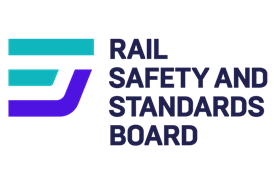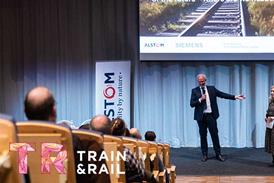INTRO: Railways in the three countries of the Caucasus region suffered badly when the demise of the Soviet Union triggered civil strife, causing healthy freight traffic to shrink to almost nothing. The railways have responded positively to the end of hostilities, and the oil boom in Azerbaijan is helping to reverse the downward trend. Maurice Howard reports
INDEPENDENCE signalled the start of major problems for the railways of the three Caucasian republics - Georgia, Armenia and Azerbaijan. Some of these problems were shared with the rest of the former Soviet Union, mostly as a result of the end of centrally-planned production and the large-scale closure of heavy industry. But some were specific to the Caucasus. The end of Soviet rule unleashed civil wars, with the northwestern autonomous republic of Abkhazia seceding from Georgia, and Armenia seizing Nagorno-Karabagh in southwest Azerbaijan. A brief but violent civil war in Georgia was ended with the help of Russian forces.
Ceasefires are now in place on the Abkhazian and Karabagh borders, and the region is now peaceful. But the conjunction of civil conflict and economic disruption has left activity at a low ebb and communications cut. Unemployment is high and the region is marked by industrial dereliction and badly-functioning infrastructure. The borders between Azerbaijan and Armenia are still closed, cutting off the Nakhichevan enclave, and the Abkhazian rebellion has cut the main line from Tbilisi to Moscow, while the Caspian coast line from Baku to Dagestan in Russia has only been reopened for about a year. Armenia is isolated by a Turkish blockade, and only has free communication to Georgia.
This had a disastrous effect on the railways. From a peak of 45 million tonnes/year, rail freight in Georgia fell to 2 to 3 million tonnes in the early 1990s. In Azerbaijan, freight fell to one-tenth of of its previous level between 1988 and 1995. Most spectacularly, annual traffic in Armenia tumbled from around 38 million tonnes to just over 2 million in the same period.
Overnight, most of the rolling stock fleets became redundant. Yard capacity was suddenly vastly in excess of requirements. Spares became unobtainable as payment arrangements broke down. When equipment failed, it was dumped. As social chaos spread, assets such as communications and signalling cables were stolen. Average speeds and service reliability fell dramatically.
Signs of improvement
There are signs that railways throughout the region are beginning to pick themselves up. Traffic is now increasing, spurred on by the oil boom in Azerbaijan. Under a contract with Chevron, crude oil from the Tengiz field in Kazakstan is being railed from Baku to Azeri refineries and to Batumi on the Black Sea, while oil products refined in Baku are also moved west by rail. Transit traffic to central Asia via the Caspian ferries is increasing too, as food imports move east and cotton moves west. In Georgia, traffic has bounced back to around 8 million tonnes/year. In Azerbaijan, it is currently running at around 10 million tonnes/year. Of this, around 50% in Georgia and 60 to 70% in Azerbaijan is oil and oil products. Azeri oil traffic in the first quarter of 1998 was up 22% on 1997 at 2 million tonnes.
As they give thought to replacing technically obsolete equipment and adapting to a commercial environment, the Caucasian countries are increasingly being looked on as a potential market by railway equipment manufacturers. A start has already been made with the installation of optic fibre communications networks. Resignalling is also a candidate for early implementation.
Foreign investors are being actively wooed, too. A number of major international contractors bid earlier this year to participate in a joint venture to build a new link between Akhalkalaki in Georgia and Kars in Turkey. Four consortia had submitted tenders for the 92·5 km Turkish part of the route by the closing date of April 28, with potential contractors bidding from Sweden and Germany, Russia, France and India in conjunction with Turkish companies. Reports indicate that no formal bids were received for the 35 km Georgian section of the route, although there were apparently responses indicating interest. These did not include the required financial credits, and following suggestions to delay tendering to the autumn, anxious Turkish officials proposed limited funding from Turkey’s Eximbank. It also emerged that one of the bidders for the Turkish section was interested in taking on construction and funding of the Georgian leg if awarded the Turkish contract.
Partners have also been sought for telecommunications projects and sleeper manufacturing plants in Georgia and Azerbaijan. Shipping and forwarding companies have been invited to set up intermodal services, following the pioneering Logistic Express container service between Poti, Batumi and Baku, set up with European Commission support in 1996.
The Georgian Ministry of State Property Management is also seeking joint venture partners for Tbilisi locomotive works, formerly one of the two producers of electric locomotives in the USSR. Adtranz, who had expressed an interest, has now struck a deal with the Novocherkassk plant in Russia (RG 4.98 p233). Current work at Tbilisi includes the repair of around 30 locomotives a year and the manufacture of industrial locomotives (below).
Technical assistance is being sought for a planned twin-unit locomotive for the Kars project as well as a new generation four-axle design, but major expenditure is needed to upgrade the works’ basic facilities.
Many of these projects have been sponsored by the Traceca (Transport Corridor Europe Caucasus Asia) programme, part of the European Union’s Tacis operation. This aims to improve transport links between the Caucasus and Central Asian states along an east-west axis from China, across central Asia, the Caspian and the Black Sea, with the purpose of strengthening their independence and providing a reliable trans-Asian supply route between Europe and the Far East. The Caucasus countries have been maintaining close contact with China on development of the route, and have backed construction of the Kashgar - Osh link as a way of improving its effectiveness. Particularly in Georgia and Azerbaijan, development of the Traceca route is seen as a way of linking these countries more closely to the European Union, as both have ambitions to join.
Europe chips in
Investment projects under this programme, supported in many cases by the European Bank for Reconstruction & Development, are focused on removing bottlenecks along the corridor. Apart from railway rehabilitation, the most important projects concern ports and ferry terminals. A train ferry service is being established between the Georgian Black Sea port of Poti and Ilichevsk, near Odesa in Ukraine. Existing ferry terminals at Baku and Turkmenbashi are to be reconstructed to cope with a recent rise in the level of the Caspian Sea. At present wagons have to be pushed ’uphill’ on to the ferries. When facilities at Aktau in Kazakstan have been rehabilitated, the train ferry to Baku will be restored. New container terminals are also planned, notably at Baku and Poti.
Initiatives to boost use of the Traceca route are also being taken under the aegis of the countries themselves. The Sarakhs Agreement signed in May 1996 by Georgia, Azerbaijan, Turkmenistan and Uzbekistan, is the most prominent of these. It currently affords 50% rate discounts to rail transit traffic. A summit meeting in Baku is planned for September 6-7 at which the regulatory framework for transit traffic will be discussed. This is expected to result in extension of the Sarakhs Agreement to other Traceca countries, as well as sea and road transport. A number of the Traceca countries resolved in January to create a common intermodal operator in conjunction with ICF. o
CAPTION: A VL10 electric twin-unit at the head of a freight passing through Tbilisi; the track appears in good condition, but reports indicate that the catenary is in a sorry state elsewhere
CAPTION: Local services around the Georgian capital are worked by ER2 EMUs; this one boasts the Georgian Railways livery on its front end
CAPTION: Two versions of former Soviet EMU are in regular service with Azerbaijan Railways at Baku
CAPTION: The Elmavalmsenebeli electric locomotive works in Tbisili (formely TEVZ) is building a batch of cokeworks locos for industrial applications in Russia
La longue marche arrière des chemins de fer du Caucase
Les chemins de fer de Géorgie, d’Arménie et d’Azerbaãdjan ont gravement souffert de l’effondrement de l’Union soviétique qui a entraîné des dissensions au sein de la vie civile, causant la chute dramatique d’un trafic jusque là en bonne santé. Maurice Howard explique que le chemin de fer s’est bien comporté à la fin des hostilités, l’essor de la production pétrolière en Azerbaãdjan aidant à inverser une tendance à la baisse. Des investisseurs étrangers sont recherchés pour des projets qui vont des télécommunications à la fabrication de traverses, en passant par des joint-ventures pour des ateliers de réparation. Beaucoup de projets sont soutenus par le programme du Corridor de Transport Europe - Caucase - Asie, dont le but est créer des liaisons fiables entre l’Europe et l’Extrême Orient
Kaukasische Bahnen auf dem langen Weg zurück
Die Bahnen in Georgien, Armenien und Aserbeidschan litten schwer als der Zerfall der Sowietunion einen Bürgerkrieg ausl

